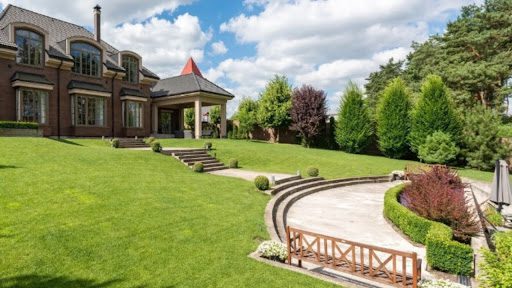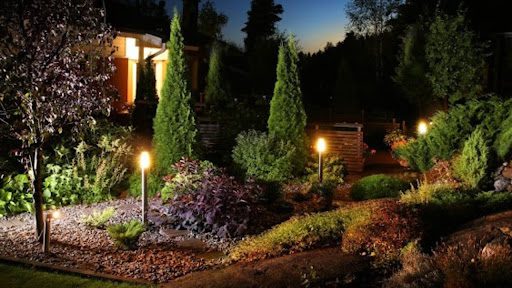Retaining walls are used to hold back soil and prevent erosion on sloped areas, create level areas for landscaping or construction, and manage water drainage to protect structures and landscapes from damage. Retaining walls are pivotal in managing soil and shaping landscapes, especially in areas with steep or uneven terrain. These structures are essential for preventing soil erosion, enhancing drainage, and creating functional outdoor spaces. By understanding the diverse applications and types of retaining walls, property owners can make informed decisions to improve their landscapes.
In this article, we’ll explore the primary functions, types, and benefits of retaining walls, and highlight how Regal Landscapes can help you with your hardscaping needs.
Key Takeaways
- Retaining walls are essential for managing soil, preventing erosion, and creating usable landscapes.
- They can transform steep areas into flat, functional spaces and improve drainage.
- Different types of retaining walls offer various benefits depending on the project’s needs.
- Proper design and installation are crucial for maximizing the effectiveness of retaining walls.
What Are Retaining Walls Used For?
Retaining walls are engineered structures designed to hold back soil and prevent erosion, particularly in areas with challenging terrain. Their primary purpose is to support soil laterally, allowing for different elevation levels on either side. This capability is crucial in preventing soil collapse or sliding, which can occur naturally due to gravity.
Primary Uses of Retaining Walls
- Soil Retention: Retaining walls maintain different elevation levels, crucial for preventing soil from sliding down slopes. This is especially important in areas with steep inclines where natural soil movement can lead to erosion.
- Erosion Control: By stabilizing soil, retaining walls help prevent erosion caused by heavy rainfall or water runoff. This function is vital in preserving the integrity of landscapes and protecting valuable arable land.
- Landscaping and Usable Space: Retaining walls can transform steep, unusable areas into flat, functional spaces for gardens, pathways, or recreational areas. They help create terraced levels that enhance the aesthetic appeal of a property while providing additional outdoor spaces.
- Drainage Improvement: Properly designed retaining walls can direct water flow, reducing the risk of flooding and erosion. Features such as weep holes and French drains can be integrated to manage water pressure behind the wall.
- Structural Support: In construction, retaining walls support structures built on sloped land, such as driveways or buildings. This ensures stability and safety for any construction project.
- Aesthetic Enhancements: Besides their functional roles, retaining walls can also serve as decorative elements in landscaping. Homeowners can choose from various materials and designs to match their aesthetic preferences.
Types of Retaining Walls
- Gravity Walls: These walls rely on their own weight to resist soil pressure. Made from materials like concrete, stone, or brick, gravity walls are simple but effective for holding back soil.
- Cantilever Walls: Cantilever walls use leverage to hold back soil and are typically constructed from reinforced concrete. They have a long arm that extends behind the wall to counteract the pressure from the soil.
- Reinforced Walls: Incorporating materials like geogrids, reinforced walls provide additional strength and stability. They are used in situations where soil pressure is significant.
- Segmental Retaining Walls: These modular blocks interlock, making installation and maintenance easier. They are often made from concrete and come in various designs and finishes.
Hardscaping: Enhancing Your Outdoor Space
Hardscaping incorporates non-plant elements into landscape design, such as patios, pathways, and retaining walls. These features provide structure and functionality, complementing landscaping and enhancing the visual appeal of your property. They create versatile outdoor areas perfect for relaxation and entertaining.
- Patios: Create inviting outdoor living areas.
- Pathways: Enhance navigation and aesthetics.
- Retaining Walls: Manage soil and add visual interest.
Landscaping Design: Creating Beautiful Outdoor Spaces
Landscaping design focuses on arranging plants and outdoor features to achieve a cohesive, attractive environment. It considers factors like soil type and climate to create sustainable and beautiful outdoor areas. Integrating elements such as retaining walls can significantly enhance the functionality and appeal of your landscape.
- Garden Beds: Arrange plants for visual impact.
- Lawns: Create green, open spaces.
- Decorative Features: Add charm and uniqueness.
Drainage Solutions: Managing Water Flow
Effective drainage is vital to prevent erosion and flooding. Solutions like French drains, proper grading, and retaining walls help manage water flow, protecting your property from water damage. Proper drainage practices ensure that water is directed away from structures, maintaining a healthy and functional landscape.
- French Drains: Redirect water away from areas.
- Grading: Ensure proper water flow and prevent pooling.
- Retaining Walls: Manage water pressure and reduce erosion.
Frequently Asked Questions About Retaining Walls
Do retaining walls stop water?
Retaining walls don’t stop water but help manage it by directing and draining water flow to prevent erosion and water buildup behind the wall.
What are retaining blocks used for?
Retaining blocks are used to build retaining walls. They provide structure and stability to hold back soil and prevent erosion.
Do retaining walls last?
Yes, retaining walls can last for many years if properly designed and maintained. Durability depends on materials, construction quality, and proper drainage.
What is the difference between a retaining wall and a normal wall?
A retaining wall holds back soil and manages water, while a normal wall typically separates spaces or provides structural support without soil retention.
Do retaining walls need concrete?
Not necessarily. Retaining walls can be made from various materials, including concrete, stone, or modular blocks, depending on the design and purpose.
Transform Your Landscape with Regal Landscapes’ Expert Retaining Wall Solutions
Retaining walls play a crucial role in managing soil, preventing erosion, and enhancing outdoor spaces. Whether you’re looking to stabilize a slope, improve drainage, or create beautiful terraced areas, Regal Landscapes has the expertise to deliver exceptional results.
With over two decades of experience, we offer personalized service and top-quality results. Reach out to us today to get started on your project and see why our clients return to us year after year. Contact us now or fill out our online form to schedule your consultation!




